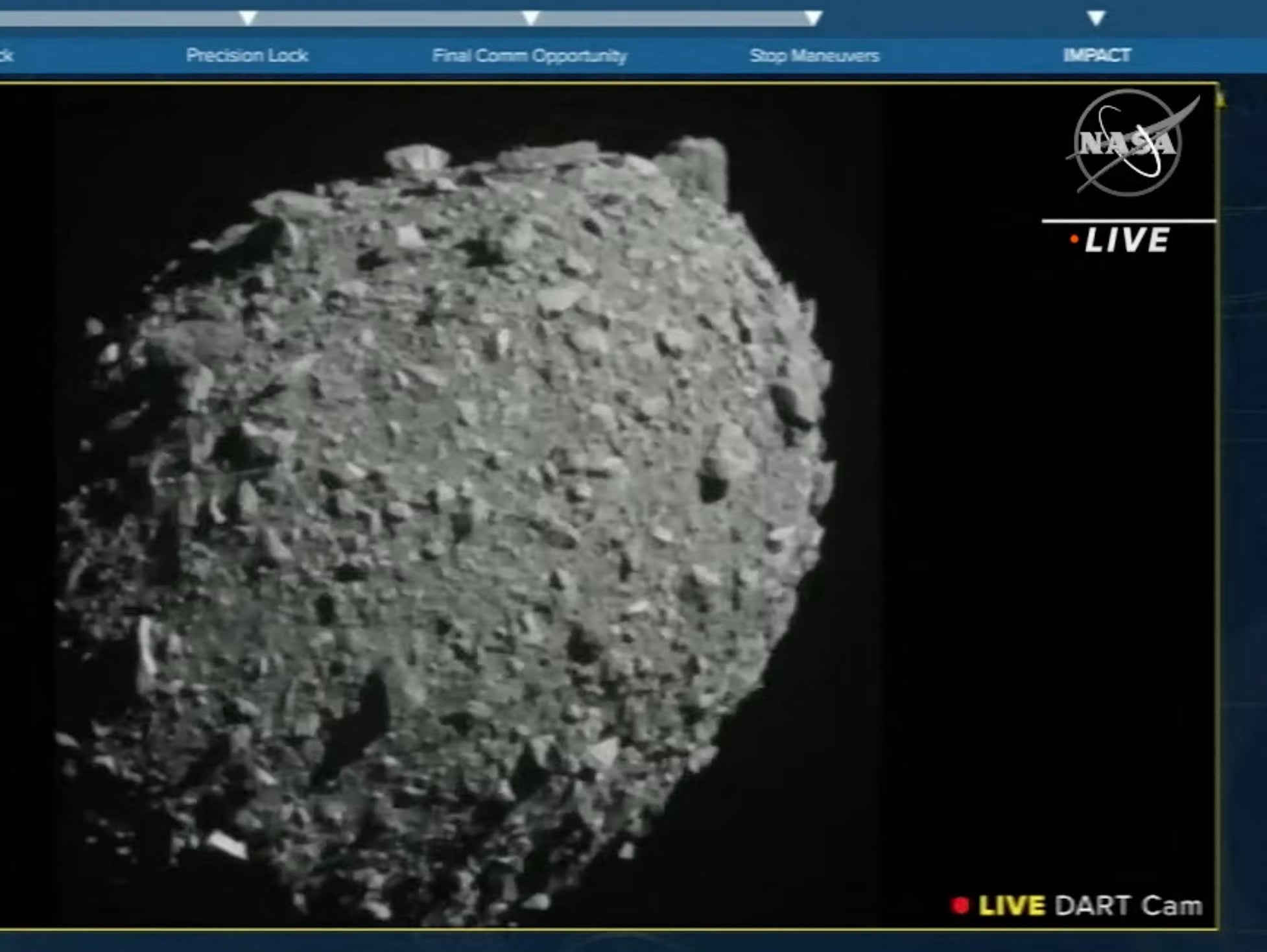First Dart asteroid impact images taken by another spacecraft released
The Italian space agency’s spacecraft had front row seats to the Dart missions successful destruction on the surface of an asteroid Monday night


Nasa’s Double Asteroid Redirection Test (Dart) spacecraft made history by smashing into the asteroid Dimorphos Monday night, but the spacecraft didn’t die alone: following just behind Dart, at a safe remove, was a tiny, microwave sized spacecraft from the Italian space agency, the Light Italian CubeSat for Imaging of Asteroids, or LiciaCube.
Nasa’s Double Asteroid Redirection Test (Dart) spacecraft made history by smashing into the asteroid Dimorphos Monday night, but the spacecraft didn’t die alone: following just behind Dart, at a safe remove, was a tiny, microwave sized spacecraft from the Italian space agency, the Light Italian CubeSat for Imaging of Asteroids, or LiciaCube.
Now, not even 24 hours after Dart’s historic impact, the Italian Space Agency has begun sharing some of the images of Dart’s impact on the asteroid, first in a press conference, and now on social media channels.
In a Tuesday morning Tweet, the Italian space agency first shared a brief animation showing the before and after impact images of Dimophos, which is the smaller, fainter of the two gray objects. It is Dimorphos that suddenly grows brighter as Dart strikes it at 14,400 miles per hour; the larger object is Didymos, the larger companion asteroid to Dimorphos.
The Italian text of the Tweet quotes Elisabetta Dotto, Science Team Lead at the Italian National Institute of Astrophysics as saying, “"A pre-impact and a post-impact image. You can see the flash produced by the impact of Dart."
In a second Tweet shared by the Italian Space agency, the image orientation is changed, with Dimorphos see in the upper left of the image, obscured in a bright flash, with Didymos illuminated by the impact to the middle right of the frame.
“In the foreground we see the central body Didymos, and above Dimorphos completely covered by the debris produced by the impact,” Dr Dotto is quoted as saying in the Tweet.
Liciacube took the images at the time that Dart struck Dimorphos, but had to wait until the Deep Space Network, the globe spanning network of radio antennas used to communicate with spacecraft beyond Earth’s orbit, could begin downloading the images. There could be more images to come from Liciacube.
There will also be more images to come from other telescopes.
Myriad ground-based telescopes were trained on Dimorphos at 7.14pm EDT Monday, the moment Dart made its impact on the space rock, and some of those, such as the Asteroid Terrestrial-impact Last Alert System, or Atlas Project, have already released their images of the Dart impact.
Other space based observations, which include Nasa’s Lucy mission to the Jovian asteroids, and the Hubble and James Webb Space Telescopes, will also provide imagery, once they can be downloaded through the Deep Space Network.
None of those images, however, will likely carry the same resolution and degree of detail as those streamed from Dart itself as it closed in on its target, revealing Dimorphos to be a great, giant egg of an asteroid, strewn with boulders.

The next up close and personal look at Dimorphos will come in 2026, when the European Space Agency’s Hera mission visits the asteroid to survey the impact crater left by Dart and take the final measurements to assess just how much the impact changed the asteroid’s orbit around it’s larger companion Didymos.

Dart was a test to see if slamming a spacecraft into an asteroid would be an effective way to alter its orbit over time, providing Earth with tools to divert dangerous asteroids on a collision course with our planet, and scientists believe Dart could ultimately alter Dimorphos’s orbit by as much as 10 minutes.
Join our commenting forum
Join thought-provoking conversations, follow other Independent readers and see their replies
Comments
Bookmark popover
Removed from bookmarks